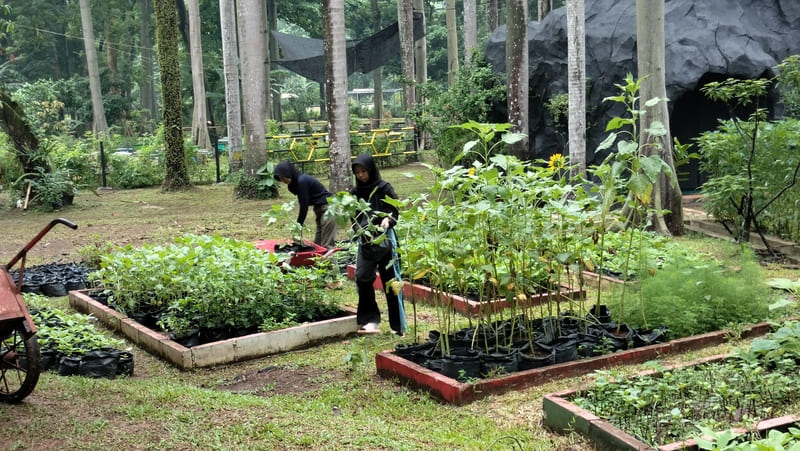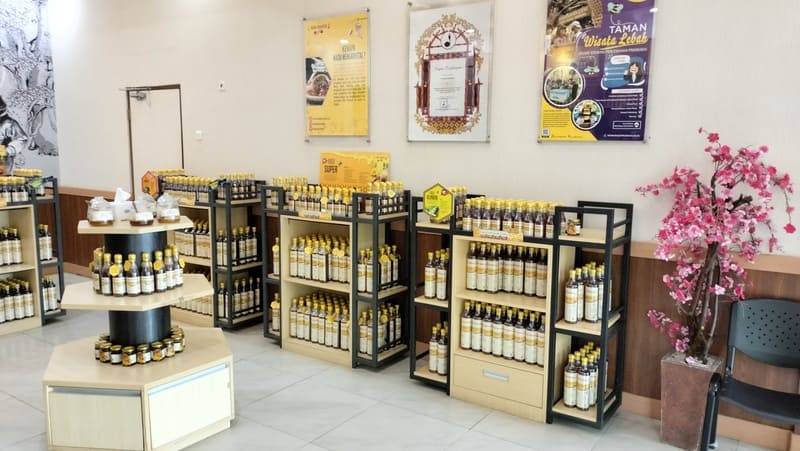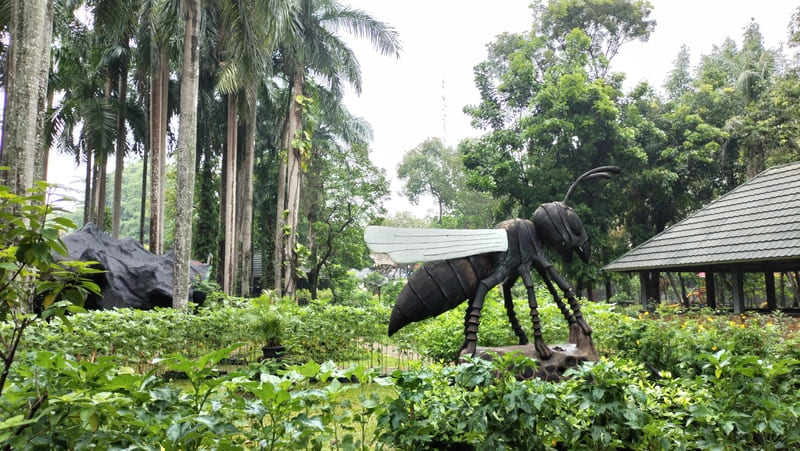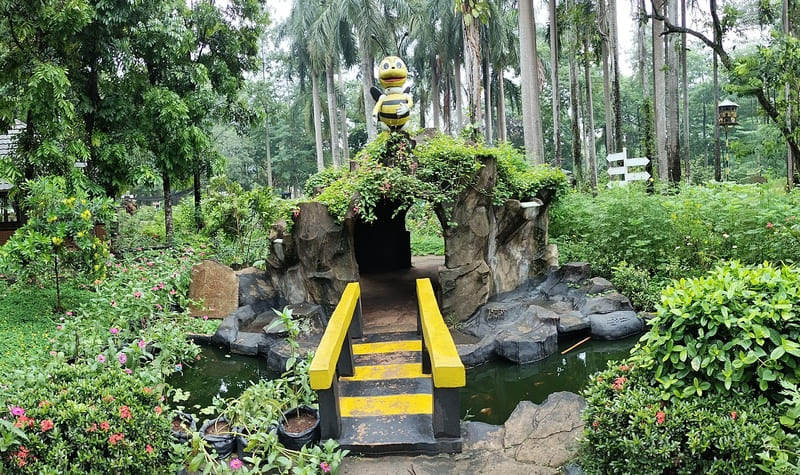Languid, lazy gold pouring clear: there is nothing as theatrical and as magic as honey … even before you slather it on your croissant and taste that unearthly bee excretion.
Honey, eternal: daring archaeologists have eaten from three thousand-year-old jars of honey, stored with the mummies of Egyptian nobles. It never spoils.
Not only aesthetically appealing, lazy folds unrolling across dark bread, but honey is also sexy, and like other sexy artefacts, it has a dangerous side to it: the toxins in pollen from the gorgeous and fragrant Rhododendron Ponticum flower can cause delirium or even kill in high enough concentrations.
Honey was thus weaponised in ancient times. In 401 BC, Xenophon, an ancient Greek commander, led an army of 10,000 soldiers from Persia back to Greece. At Pontus, on the Black Sea coast of northeast Turkey, he reported “an extraordinary number of swarming bees”. His men, eager for anything sweet, hunted down the hives and gorged on the wild honey.
Xenophon wrote that he was “…appalled when his soldiers suddenly behaved like crazed madmen and collapsed en masse.
“His entire army was paralysed and incapacitated for days, totally vulnerable to possible enemy attack.”
In fact, seekers of psychedelic experience spend good money to hunt down the experience – and hopefully survive it. They are guided by locals through the high mountains of Nepal, where “mad honey”, a dark red and bitter taste, packs a hallucinogenic wallop, thanks to grayanotoxins from Rhododendron. You get high, maybe you die – the highest high of all.
Meanwhile, here we are in the twenty-million-strong metropolis, making money, looking funny and eating honey, about to welcome in The Year of the Dragon.
Ah, Jakarta – it is really no prize for a visitor. I’m always impressed when foreign tourists are lured to visit the crowded, smoggy centre of business and government. Apart from the soaring Phinisi sailing ships of Ancol – definitely worth a visit, particularly for photographers – and Ragunan, one of the top zoos on the planet, there is not much to do in Indonesia’s legacy capital.
True enough, there is Ancol, with its rides, displays, restaurants and water park, but a family can easily go through a couple of million Rupiahs swinging through the Dunia Fantasi. Ouch.
Hey, how about a visit to South Jakarta, to a fine nature site, with a vast playground for kids and a stunning array of the finest honeys in Indonesia, Madu Pramuka; the park, playground, educational exhibit and honey shop allied with the Indonesian Scouting movement, just off the toll road at the Cibubur Exit.
Madu Pramuka has expanded remarkably since I was last there, some years ago, losing aggressive monkeys into the Jambore Scouting Park (an area swarming with wild simians, so watch your kids and belongings).
The timing of my Monday morning visit to Madu Pramuka was unfortunate, as the thousands of small children usually swarming over the gigantic concrete bees and playland tunnels were not to be seen; what was interesting was the squad of industrious Jakarta high school students raking, hoeing, planting, and helping maintain the flora of the park, as part of their Praktik Kerja Lapangan (“PKL” for “Field Apprenticeship Work”).
There are numerous educational displays at Madu Pramuka, including visits to the bee hives, where the hard-working, tiny beasts collect nectar from multiple flower sources, swarming around hives, just next door to the store and playground – the area was closed to us on that day, unfortunately.
The honey shop features a huge supply of bottles of honey certified “pure”, which is less common than you might imagine, as it is easy and tempting for the unethical seller to fill out bottles of pricey honey with the low-grade variety or even cheap sugar syrup – or worse, to feed sugar to the bees, a destructive practice.
Such a delightful selection of flavours: Madu Kapuk comes from flowers on the gigantic kapok trees that festoon much of Java; Madu Karet sounds funny in English – who is hungry for “rubber honey”? – Madu Multiflora is, as advertised, a rich blend of several kinds of honey.
Madu Pollen tends toward the bittersweet but is said to have various medicinal properties. Take a drink of Madu Kopi but don’t be disappointed when it doesn’t taste like a cup of Java – it is still delightful.
One of my favourites, Madu Rambutan, I passed up in favour of Madu Super, which is described as being replete with soporific powers, good for rheumatism, brain food, chock full of hormones, hubba hubba, and with potentially ameliorating effects on urinary troubles, high blood pressure, kidney failure, backache, heart conditions, cholesterol, asthma, healing of wounds following an operation – are you still with me? Are you giggling? You should be: these folks are clearly not bound by the stern medicinal strictures applied to such advertising in western countries.
Meanwhile, Madu Super also promises relief from allergies, drowsiness, nervous conditions, crossbreeding (don’t ask – don’t tell), low blood pressure, skin conditions, pizzlesprung liver, and is bursting with proteins, carbohydrates, vitamins, minerals, enzymes and antioxidants. Hell, I may just decide to live forever if I lather enough of this on my pumpernickel and Afghan crispbread!
Okay, I’ll confess: I buy the honey mostly for the flavour, not the purported nutritional benefits; in fact, the Madu Pramuka is flavourful enough to attract all the honey bears in Java to tear into the shop at midnight and wreak havoc as they smash bottles and lap it up. The bears? Oh I mean the ones that escape from Ragunan.
Take the kids and plan on spending half a day; there is dense tree cover so you won’t be sweating from the heat. The giant sculpted bees are, if you will pardon the detestable phrase, most “Instagrammable”.
Bottles range from Rp130,000 upwards, and the store sells two-litre containers for around Rp400,000.
Don’t be surprised if that golden honey someday is as rare and expensive as gold: the lethal insecticides from our friends in the chemical industry are killing off bees by the millions, worldwide.
Madu Pramuka, “Honey Bee Park of Scouting”
- Tel: +6221 844 5104
- WhatsApp: +62 813 1986 0660
- Operational Hours: 9 AM – 5 PM
- Website: https://madupramuka.co.id/




